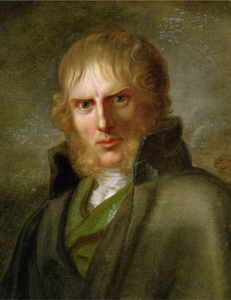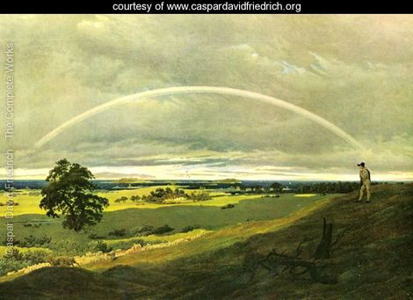CASPAR DAVID FRIEDRICH (1744, 1840)
German Romantic Landscape Painter


Friedrich’s paintings were typically spiritual allegories rendered realistically in other worldly settings. He anticipated the spirit of surrealism by more than 50 years. Artists that have explicitly mentioned Friedrich’s inspiration are Max Ernst, Rene Magritte, Mark Rothko and Gerhard Richter.
There were several of Friedrich’s paintings in the Niedersächsisches Landesmuseum Hannover, so Horst was exposed to his work early from an early age.
One of Friedrich’s innovations was non-traditional and unexpected composition, a feature shared by many of Horst’s paintings. Horst also set small figures into expansive landscapes, depicting the overwhelming power of the natural world. But that motif is deliberate allegory of spiritual world and the epic scale of a spiritual journey. Horst freely attributed this inspiration to Friedrich.
Not surprisingly, Friedrich’s difficulties with being accepted are no different than any innovative artist:
I am not so weak as to submit to the demands of the age when they go against my convictions. I spin a cocoon around myself; let others do the same. I shall leave it to time to show what will come of it: a brilliant butterfly or maggot.
-- Caspar David Friedrich
In some respects Horst’s life in Fairfax and Bainbridge were also cocoon-like; he used his semi-isolation to pursue his vision unencumbered by undue criticism.
Friedrich’s paintings have a strangely modern feel to them. And even though they aren't particularly sentimental, his work was adopted by the Nazis, and later by Disney, which impeded his acceptance by serious fine art critics and historians. However, in the 1970’s his work was reevaluated and its importance is now widely acknowledged.
In the painting above right, we see Friedrich’s placement of small figure in a large landscape. His unusual arrangement, where the rainbow connects the man to the tree, violates the so-called "rules of composition". But Friedrich uses this to reinforce the symbolism.
Compare to Horst’s
Double Rainbow H24.